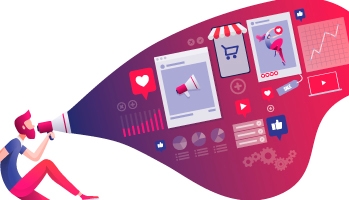
Digital transformation: 3 significant opportunities
What are the real opportunities presented by a true digital transformation for the media and how can we make the most of them?
Over the past two months the whole world has adapted to doing things differently. Inevitably, this major change also affects how the media is created, edited and published, and how the audience accesses information.
This sudden global shift in lifestyles has caused all the behaviours and processes that were previously in place to be accelerated. The data indicate that, at a global level, the percentages of digital audiences are much higher since the crisis broke out. We have also seen new free registrations, paid subscribers and adblocker releases increase significantly since early March.
In a radically different scenario, new opportunities are emerging for those who are reconsidering adapting and taking a new direction. Being and thinking digital offers essential strategic opportunities, which will require effective tools according to the new needs to achieve success:
1.- Know your readers, but for real
Digital audiences provide the media with valuable information that, if well interpreted, can form the basis of a digital strategy that is appropriate to the medium and its readers. This is something that print audience data cannot offer, since it does not reach the detail or immediacy of digital.
In a digital revenue strategy, knowing what patterns readers follow is essential. An analytics tool that provides the key data the media needs will provide information on general audience trends as well as specific data of particular relevance, such as the immediately preceding steps a reader took before becoming a subscriber.
2.- Open the window to digital subscriptions
Advertising has dropped significantly since the beginning of the crisis, causing the media to lose much of its revenue.
The good news is that, just as digital audiences have increased considerably, so has the monetization obtained from these digital audiences, specifically through subscriptions. This is another process that has accelerated in recent months thanks to changes in reader behavior.
The future of the media business model will combine advertising and subscription revenues. This requires a deep understanding of readers and the ability to test different methods until the strategy that best suits the medium itself and its readers is defined.
3.- Establish a flexible business model, capable of adapting to change
The immediacy of digital workflows has the great advantage of allowing the medium to be flexible in its strategies. Results can be analysed in the short term, so it is possible to know soon if actions are proving effective or not, and rectify if necessary.
In this new context it is very important to keep an open mind to possible changes and new trends. Trying to learn from what is happening and what works for others will allow you to adapt all this information to each medium and its specific audience.
At the software level, relying on tools that offer functionality developed specifically for the media business will make a difference.
If we project the opportunities of the current scenario in a practical environment, we find that the actions that each media will be able to carry out will depend on the tools it has available. The key is to have the most effective functionalities to maximize the benefits:
- RFV score analysis: able to calculate the value of visitors through a score that takes into account the freshness, frequency and volume of visits of each user. This allows the media to categorize its audience into different segments (passing, sporadic, daily or loyal users).
- Content recommendation based on the visitor's habits, both by affinity and by theme ("more for you"), according to the trends of the moment ("trends"), about the article read ("more like this") and articles selected by the editorial staff ("sponsored").
- Content personalization according to the device from which the user accesses, the segment of the public to which he belongs, his geographical location or even the day of the week.
- Configuration of a user profile where registered users have the possibility of accessing a record of their favourite articles, articles they have saved to read later and to track content by subject, trend or preferred authors.
- Sending personalized PUSH notifications that capture the user's immediate attention and get into a reading habit.
- Configuration of different types of paywall according to the audience segmentation defined through the RFV score and based on an audience loyalty strategy.
It is time for the media to develop a digital business philosophy; to continue with the digital strategies they have already started, to bet on a new digital direction if they have not already done so, or to strengthen their online presence if it is not consolidated.
The direction is clear, and the tools that will make this digital transformation a reality are essential to achieve successful results. Protecmedia remains at the forefront of technology, with a carefully studied forecast of the sector's progress, something that allows our team to be able to develop the most relevant functionalities in the face of new needs.




